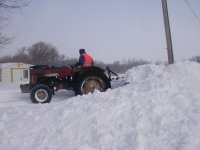If you are concerned about the front end coming up, your idea is not recommended. In physics, (statics, actually), it is not where the point is horizontally, it is where the pull point is vertically that creates the torque to lift the front. As SmallChange stated, the torque is relative to the point where the tires contact the ground; has nothing to do with the axle. This means the lower the connection point is to the ground, the lower the lifting torque.
What is possible, is to control how high the front wheels lift if indeed they lift at all. MHarryE's description of tractor pulls mentions this point. If a 'pull' tractor were to pull from their axle and not from a bar that extends well behind the axle, every one of them would flip. The key is to use a solid drawbar that extends the pull point behind the tire contact point. When the front end comes up, this pull point drops down. As it drops, the connection point is lowered and the torque is reduced (see paragraph above). The further away/behind from the tire (ground) contact point, the lower the front tires will be able to rise.
